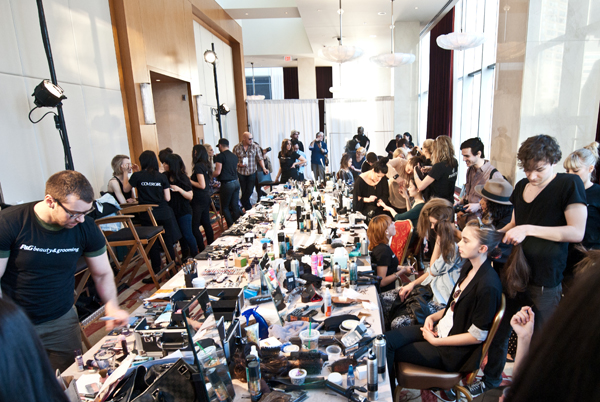By Holly Cheung
Photography by Kareen Mallon and Aleyah Solomon
According to Canadian fashion experts, one of the biggest hurdles in building a successful fashion brand is thinking like a business-savvy entrepreneur. Industry specialists say budding designers should focus on a classic aesthetic in order to set themselves up for success in Canada.
Wearability is key
Michelle Baboolall, owner of Yorkville’s Homegrown Boutique, says her bestsellers are always the classic pieces. “We try to stay away from trends and carry updated classics with a modern twist for the day, with bold, edgy pieces for the night,” she says. Homegrown stocks both emerging and established Canadian labels.
Canadian architect-turned-designer Rachel Sin agrees with Baboolall. She says her success in the industry stems from designing wearable, classic day-to-evening pieces that are truly timeless. Functional, work-appropriate dresses are her top sellers. “You need to design something that people can wear, that takes you to work and makes you look professional,” she explains.

Rachel Sin with models at her fall/winter 2013 runway show presentation at Montréal Fashion Week. Photo: Aleyah Solomon.
As an architect, Sin says that her line is more marketable than other labels because of its emphasis on both utility and fashion: “Even though we have done runway, everything is ready-to-wear.”
Benefitting from fashion weeks
According to Baboolall, retail environment is one of the biggest challenges local designers have to face. She explains that a fashion rookie often makes the mistake of being too concerned with getting media approval, instead of focusing on building relationships with potential clients.
“This is made clear at Toronto’s fashion week, which takes place well after buying season is over,” says Baboolall. “Fashion weeks in other cities occur earlier to facilitate market appointments post-show. This needs to happen here in order for our designers to really benefit from the exposure that participating in the fashion week affords them.”
Fullerton: Quality beats trends
Paola Fullerton, founder of the shOws, which feature internationally acclaimed Canadian designers, is skeptical of the idea that fashion is purely a seasonal trend and says that classic pieces don’t have an expiration date.
“We still have this disposable idea of fashion, which it shouldn’t be. A good cashmere sweater will last you 15 years,” she says. Fullerton adds that investing in beautiful, high-quality pieces is the best way to shop—for example, she enjoys wearing a Jeremy Laing skirt with every shoe type. Fullerton is especially proud of Canadian designer Steven Tai. “He doesn’t design pants that make your ass look skinny—his goal is to design something that is totally true to your message, not stores’ trends,” she says.
Fostering and retaining emerging talent
In order to encourage budding designers to flourish, Fullerton credits organizations like Toronto Fashion Incubator and Mercedes-Benz Start Up for fostering growth within the local fashion community.

JoAnne Caza welcomes audience at the latest Mercedes-Benz Start Up semi-final, which took place in Kitchener, Canada.
JoAnne Caza, director of communications and public relations at Mercedes-Benz Canada, says the organization’s mandate is to help designers through the process of overcoming hurdles. Constructive criticism is a must, she says. “If it’s lousy, we’ll tell them, and some people who are doing this don’t understand how complicated it will be,” Caza explains.
Jarrad Clark, director of global production for IMG Fashion (a partner of Mercedes-Benz Start Up), says he sees substantial fashion talent in Canada, especially while touring the country. “The program helps to develop and retain Canadian designers by discovering new talent […and] it allows a network to be built through unprecedented access to experts, combined with invaluable real-world experience,” he explains.
Clark adds that although many successful Canadian designers expand to the U.S., it is purely for retail sales. “It’s really a numbers game, and the U.S. has a much larger population. To be financially successful, you need to sell your designs, so placement […] in the U.S. and Canada and other countries, is critical for a successful business model,” he says.
Caza references the useful tips from professionals as the most important perks of competing in the program. “We see kids that are going through school, selling [their designs] through their basement, and they are not ready for production. They have mere bits and pieces of their collection and it’s not going to work.”
The most successful applicants are the ones that incorporate suggested changes to their labels, such as switching manufacturers. As Caza concludes: “Advice in this industry is even more important than money.”











Good advice by all but the closing line by JoAnne is particularly true.
always i used to read smaller articles which as well clear their
motive, and that is also happening with this paragraph which I am reading now.